Kuzushi, Biomechanics, and the Physics You’re Already Using
Every judoka has felt it.
That fleeting instant when your opponent shifts just enough — and the throw arrives almost effortlessly. No strain. No forcing. Just inevitability.
We usually call it timing. Or instinct. Or say it “just clicked.” But that moment isn’t magic. And it isn’t luck.
It’s physics — already in motion.
In this NotebookLM podcast, we discuss the phases of Judo throwing techniques, specifically Kuzushi (unbalancing) and Tsukuri (fitting), categorising movements into General Action Invariants (whole body motion for distance shortening) and Specific Action Invariants (limb movements for positioning and force).
⸻
The Hidden Physics of the Perfect Throw
Picture a Seoi-nage in the closing seconds of a championship bout. The crowd rises. The movement looks fluid, almost casual — as if the throw has rehearsed itself. What you’re seeing isn’t spontaneity. It’s organisation.
Decades ago, Italian physicist and biomechanist Attilio Sacripanti began stripping judo down to its mechanical essentials. His conclusion unsettled tradition: not all throws need classical unbalancing. Some thrive precisely because balance is already dissolving.
In other words, judo doesn’t always create imbalance. Sometimes, it steals momentum and leaves.
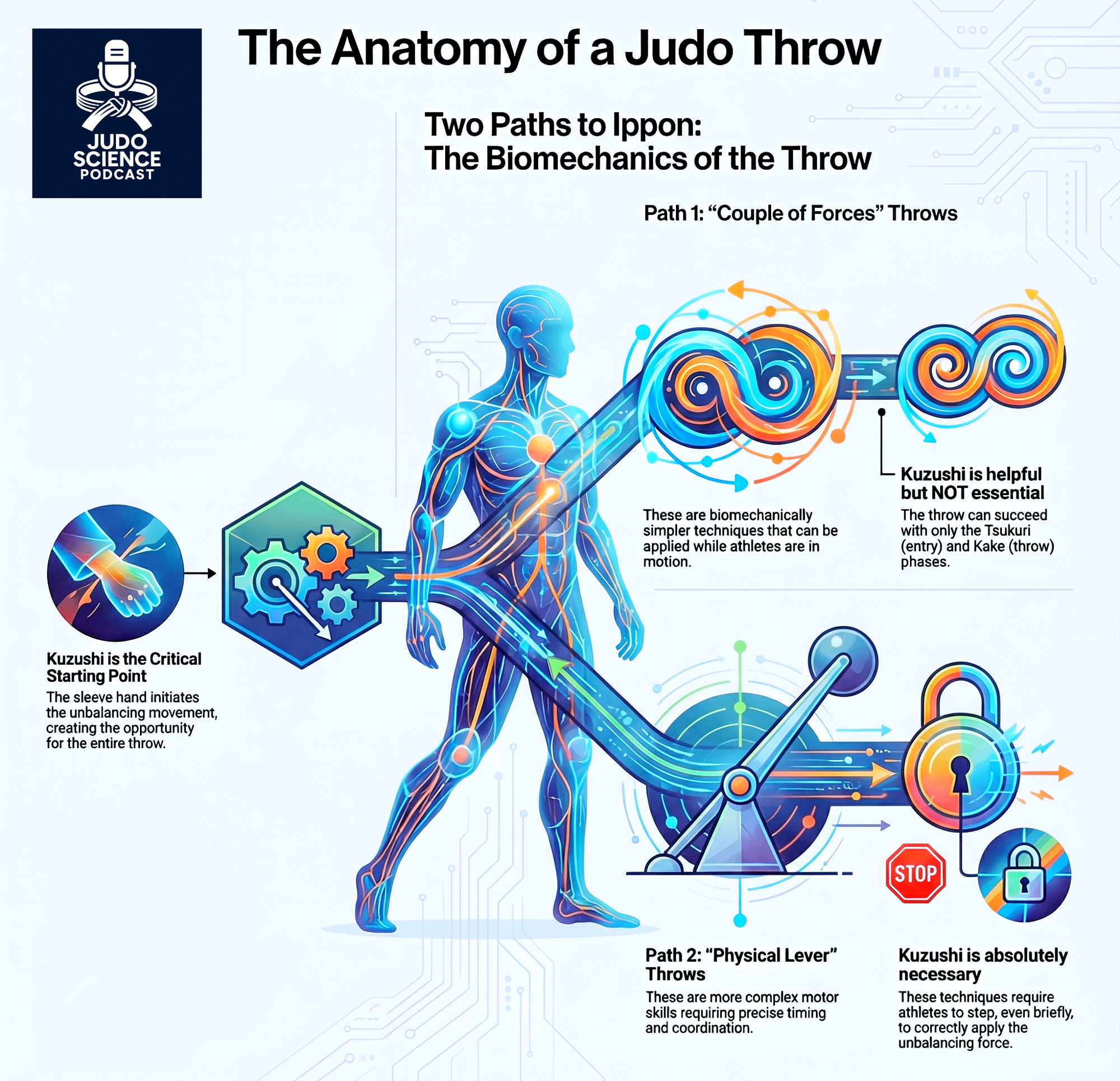
⸻
Two Ways to Break a Body
Sacripanti showed that every throw in judo can be understood through two biomechanical strategies — not styles, but structures.
- Couple techniques work by rotation and opposing forces. Think O-soto-gari or Ko-uchi-gari. These throws don’t wait for stillness. They arrive mid-movement, borrowing instability that already exists. Classical Kuzushi helps — but it isn’t always required.
- Lever techniques, like Seoi-nage or Tai-otoshi, are less forgiving. They turn your body into a pivot point. Distance must close. Position must be exact. Timing matters because leverage collapses without it.
One group tolerates chaos. The other demands order.
And here’s the uncomfortable implication: the throws we call “technical” are often just expensive. They cost more energy, require more coordination, and punish small errors.
Elegance, it turns out, has a metabolic price.
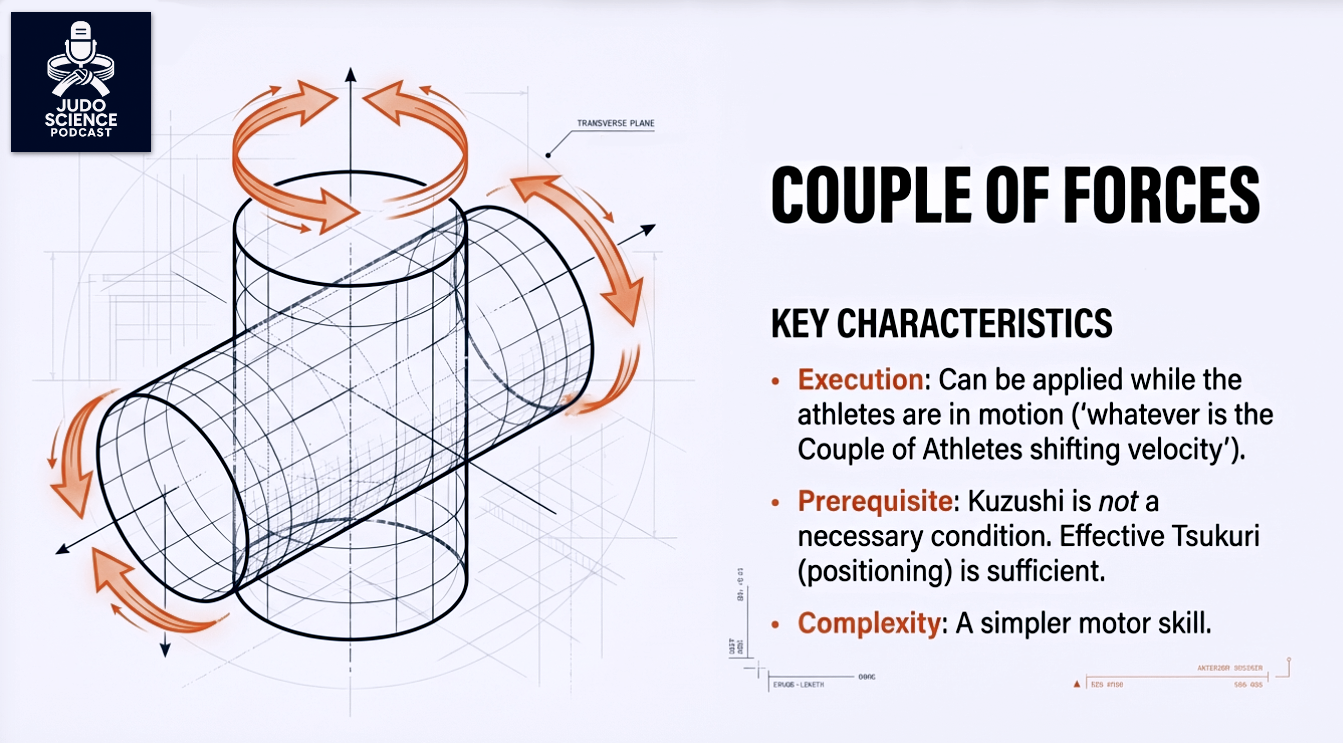

⸻
Why does this matter?
Because it changes how you train. Couple throws can be drilled on movement and positioning. Lever throws? They need exact timing and energy management.
For a further introduction to these ideas, check out the video The Essential Physics Behind Kuzushi from Nakano Judo Academy, which unpacks the physics in a competition context.
⸻
The Question Nobody Likes Asking
If Kuzushi is truly fundamental — why do so many successful throws seem to ignore it? This is where biomechanics stops being tidy.
Sacripanti’s work suggests something radical: Kuzushi and Tsukuri are not separate phases but a single, continuous action. Movement flows. Distance collapses. Structure reorganises. The throw emerges — not as a step-by-step sequence, but as one connected event.
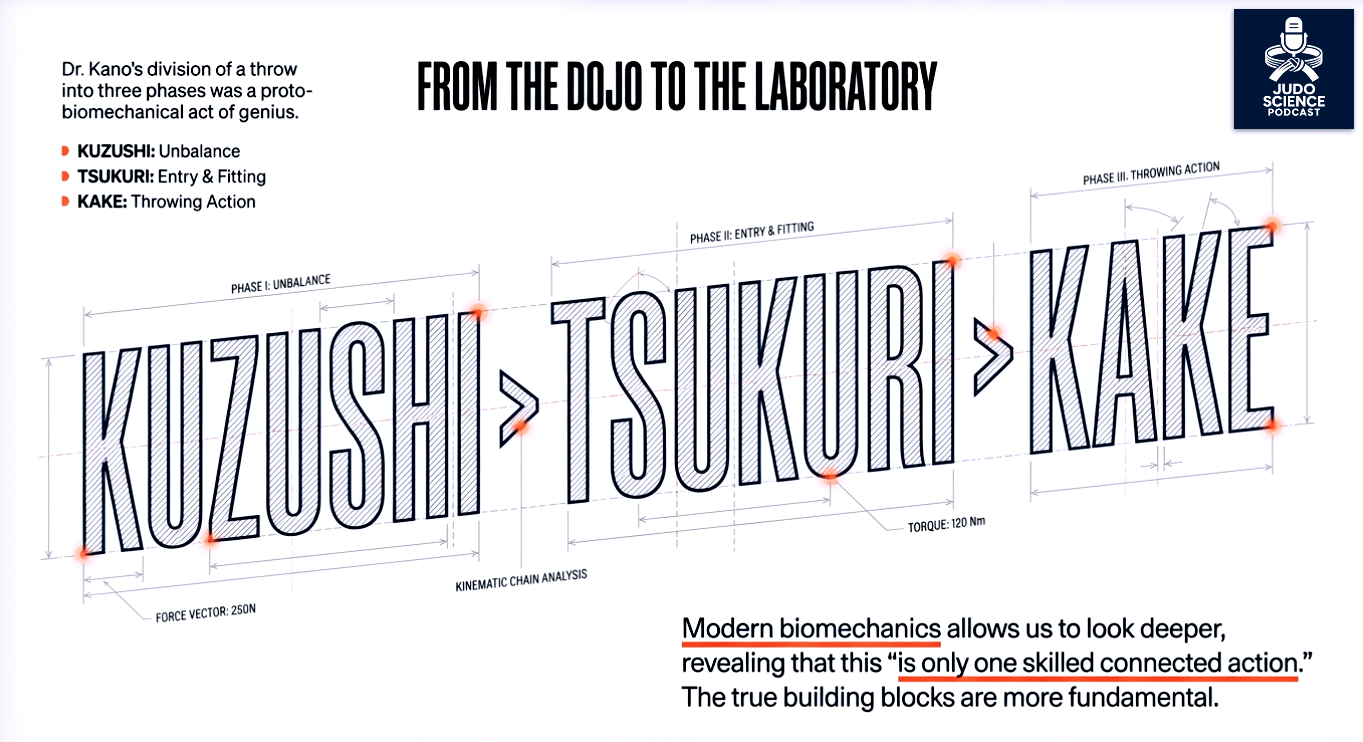
To describe this, he introduced Action Invariants — the recurring patterns your body uses whether you’re aware of them or not.
- General Action Invariants (GAI) are the big moves: stepping, turning, closing space.
- Specific Action Invariants (SAI) are the fine ones: the precise choreography of arms and legs that make leverage work.
Every throw needs GAI. Only the more complex ones demand SAI.
This is why some techniques appear everywhere in scrambles — and others only surface when the world briefly slows down.

⸻
Then the Hands Enter the Argument
At this point, biomechanics feels almost settled. And then Neil Adams complicates everything.
Adams reframes Kuzushi not as an abstract concept, but a tactile fact: your hands begin the throw. Not your hips. Not your feet.
The sleeve hand disrupts structure. The lapel hand dictates direction. Get this wrong, and no amount of footwork rescues the technique.
This isn’t a footnote — it’s a contradiction. If Kuzushi lives in the hands, why do so many coaching systems teach it from the ground up? Why do we drill entries while neglecting the moment balance is first negotiated?
Adams’ so-called Kuzushi Revolution isn’t about new techniques. It’s about returning to the earliest decision point — the instant control is either established or lost.
Before the throw exists at all.
Watch Adams's philosophy in action in the compelling video Kuzushi: The "Lost" Method of Throwing, which demonstrates his emphasis on hand control and early disruption of balance.
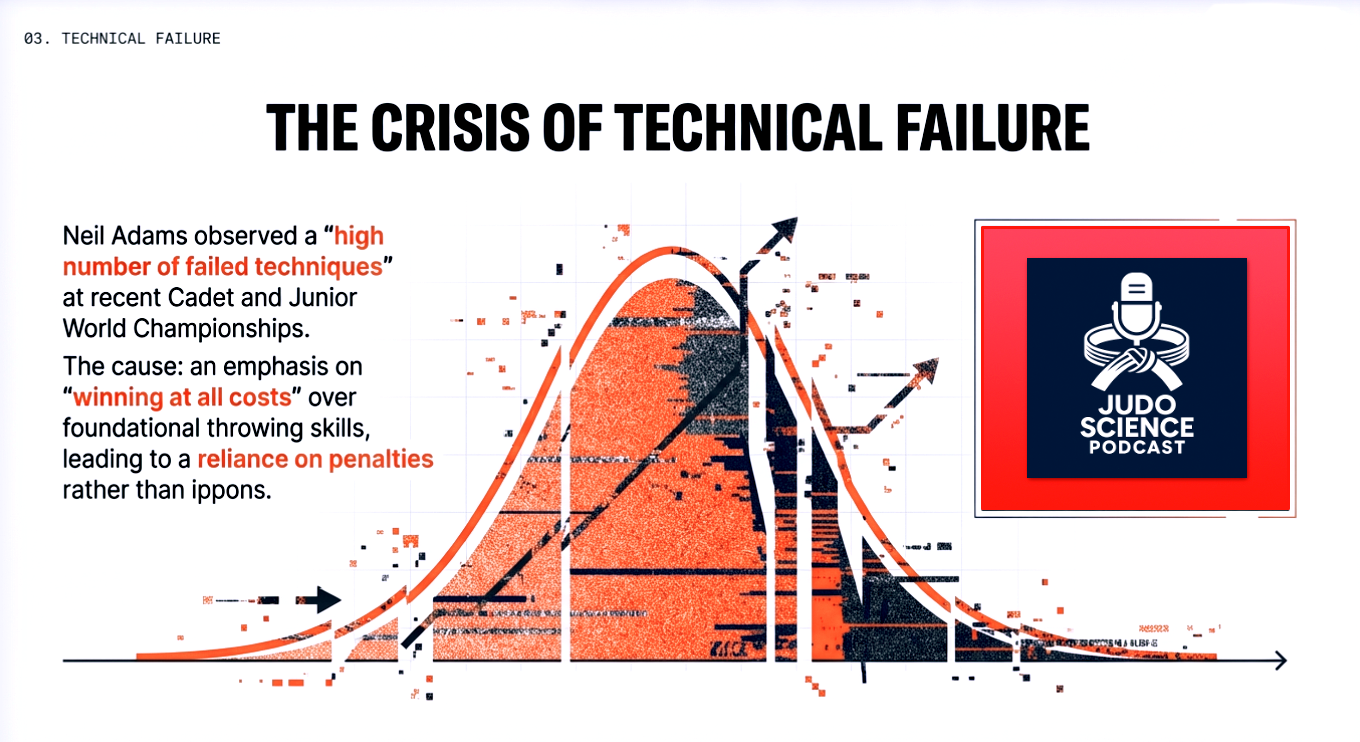
⸻
Why Some Throws Survive the Chaos
Real matches don’t pause. Couple-based techniques flourish precisely because they don’t ask the fight to slow down. They exploit transitions, steps, reactions already underway.
Lever throws need a different world — one where motion briefly aligns, where balance is frozen just long enough for mechanics to lock in.
That’s why some throws feel “always there” — and others feel brilliant but rare.
It isn’t preference.
It’s physics meeting circumstance.
For practical drills and examples, check out How to Destroy the Balance of Your Opponent for Competition Judo on YouTube.
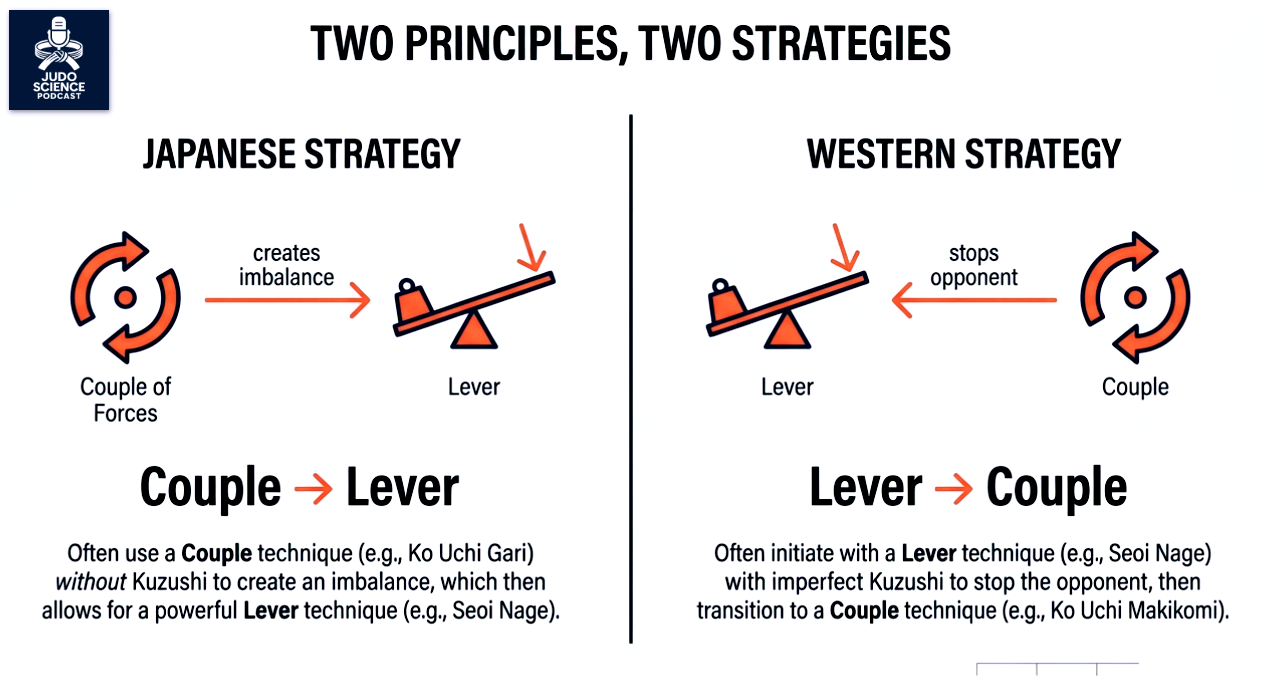
⸻
Takeaways for the Tatami
- Not all throws require Kuzushi. If you're focusing on couple techniques, prioritize positioning and timing over forced imbalance.
- Master your hands. Treat hikite and tsurite not as accessories, but as the brains of your throw.
- Know your Action Invariants. Big movements (GAI) get you close. Fine ones (SAI) make the magic happen, especially in lever-based techniques.
- Complexity means energy. Lever throws are beautiful but costly. Choose them wisely in high-intensity bouts.
- Coaches, slow it down. Dedicate sessions just to gripping, balance, and movement—before the throw even happens. Coaching Kuzushi in Judo is a great guide for building these fundamentals.
⸻
Final Thought
The best throws aren’t chaos. They’re choreographed physics — rehearsed so deeply they feel like intuition.
So here’s the real question:
Are you training throws…
or training the conditions that make them inevitable?
Quiz: Why are couple-based judo throws often more effective during dynamic movement, compared to lever-based throws?
A. They require more strength and less technique
B. They depend on precise timing and positioning
C. They can be executed without perfect unbalancing
D. They involve complex coordination of multiple body parts
Answer
Correct Answer: C. They can be executed without perfect unbalancing.
Explanation: Couple-based throws can be applied effectively during movement because they don't rely on perfect unbalancing, making them suitable for dynamic situations.
⸻
(1) Sacripanti, Attilio. (2010). Biomechanics of Kuzushi-Tsukuri and Interaction in Competition.
(2) Adams, N. (2023) The Kuzushi Revolution, The Arts and Sciences of Judo, volume 3, no 2, 2023. Available at: https://78884ca60822a34fb0e6-082b8fd5551e97bc65e327988b444396.ssl.cf3.rackcdn.com/up/2024/01/The_Arts_and_Sciences_of_Judo_-1704797681.pdf (Accessed: 13 May 2025).




Member discussion: